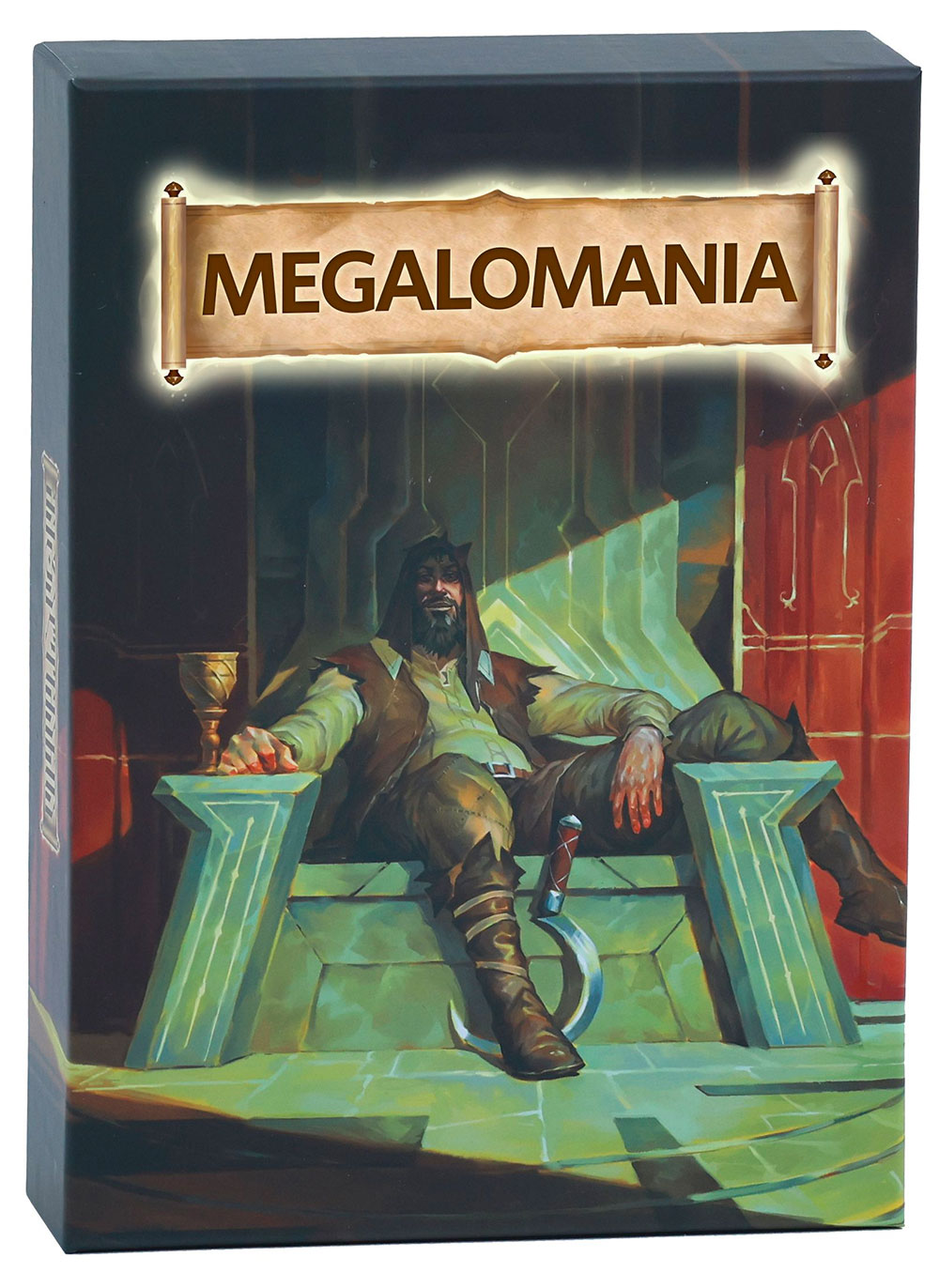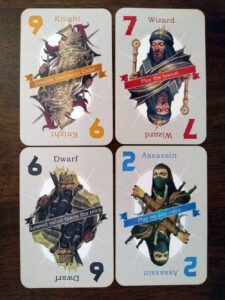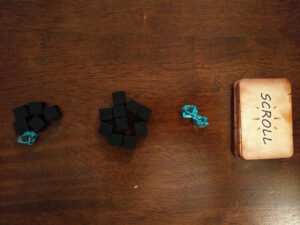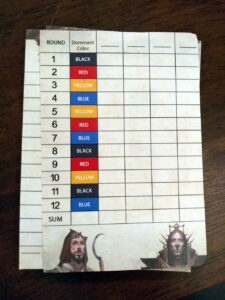
Note: This preview uses pre-release components and rules. What you see here may be different from the final, published game. This post was a paid preview, you can find out more information here.
When word came through that there was a preview opportunity for a trick-taking game, I didn’t jump at the chance initially. Trick-taking games aren’t usually my thing. But when I found out that the designer and publisher were from Georgia, my interest was piqued and I took the plunge. I love Georgian cuisine; the food and wine are phenomenal. So, I figured it’d be worth trying out this trick-taking game from the birthplace of wine and seeing how it plays.
Megalomania, launching on Kickstarter on December 3, is designed by Vakho Inoridze and published by BG Era Games. The game supports 2-4 players and should take around 45 minutes once players are familiar with the card abilities and unique gameplay options.
Gameplay Overview:
Megalomania eschews the typical ruleset of a trick-taking game where the goal is merely to win the most tricks. Instead, players must fulfill the special conditions of the current round’s Mission in order to score points. The game plays out over the course of 12 rounds, each of which has a different dominant (trump) color.
At the beginning of a round, the lead player will reveal one of the Missions, which determines how many cards are dealt to each player, and how they are dealt. For instance, you may receive some of your cards facedown, or some could be on the table faceup for all players to see. The total card count is variable, so the number of available tricks to take fluctuates from round to round. There are also sometimes special rules for how to play cards. For instance, one Mission introduces a programming aspect, requiring you to choose the order in which you’ll play your cards before the round begins.

Finally, the Mission card will give the objective that players must complete in order to gain (or avoid losing) points for the round. You might be tasked with avoiding taking tricks or taking only an odd number of tricks, or even penalized for taking more than a set number of tricks. Therefore, you don’t earn points for simply taking tricks, or even for taking the most tricks, unless the Mission specifically says so.
Another gameplay addition to the usual genre rules is that at the beginning of each round, players will select their resources for the phase. This can be some combination of cubes and power crystals, or even a potentially valuable Scroll. Cubes allow players to modify the value of a played card, either adding or subtracting 1 for each cube placed. Power crystals give you access to the strong abilities of your cards, each of which has a special way of manipulating the rules of the game. Finally, the Scroll cards are single-use effects that can have a significant impact on gameplay.
Once Mission rules and resource choices are sorted, the lead player for the round will play a card to begin things. This card determines the lead color for the trick and subsequent players must play a card of that color, if possible. If you don’t have a card of the lead color to play, you must play a dominant color card. Otherwise, you can play anything, although it won’t help you take the trick. When playing a card, it is possible to adjust the value of the card up or down with cubes, or to use crystals to activate the card’s power.
So, what do those card abilities do, you might ask. Each card has a special way of twisting the existing rules of the game, potentially to your benefit. Playing the Dwarf, for instance, changes the rule for winning the current trick to the lowest value card played, rather than the usual highest. The Assassin card can be played on any color, meaning that if it is the dominant color, you could play it to snipe a trick even if you’ve got cards of the lead color in your hand. The Knight cancels the dominant color for the rest of the turn, which makes trump cards inconsequential for the current trick.

Gameplay Impressions:
There’s a lot going on in Megalomania that puts a fresh spin on trick-taking. The variable Mission cards de-emphasize the mindless, repetitive quest to just win all the tricks you can. There’s a good deal of nuance in reassessing how to play a round when the active goal is counterintuitive, such as when you don’t want to take tricks, or requires some crafty acrobatics, like when players gain points for having yellow cards in the tricks they’ve taken.

Also, some of the round setups necessitate adjusting tactics to take into account differing levels of information than are available in a standard trick-taking game. For instance, one Mission will force players to hand all of their cards over to their neighbor after each turn. So, when deciding which card to play in order to win a trick, you’ll also have to take into account that the cards you keep will go to another player to use on the next turn. Similarly, some Missions dictate that a portion of your cards are on the table faceup, so opponents will have more information about what options you can, or must, play. These shifting rulesets for how to take tricks, complete Missions, and obtain points lend Megalomania a degree of variability and replayability that isn’t normally present in trick-taking games.
What’s more, the decision-making space is far greater than that in the average entry in the genre. Being able to choose resources each round gives players the chance to influence how they’ll tip the scales in their favor. You make the choice once you’ve seen the Mission and your hand of cards, so this data factors into whether you want more cubes to modify card values or crystals to fuel their powers.

And those card abilities present players with some tough decisions and numerous opportunities to turn the tide at a critical moment. You’ll generally only be able to activate up to 1 or 2 of the powers on your cards in a given round as the crystals are a limited resource. So, timing when exactly to play these abilities adds a lot of depth of choice and tactical maneuvering to the game.
If I have one quibble with Megalomania, it’s only that it does have the potential to be overly long for a trick-taking game. Each game lasts for 12 rounds, which can be pretty lengthy, particularly for new players. I imagine, though, that once a group of players is familiar with the rules and unique game flow, and has internalized a lot of the decision paths, the game speed can pick up and make for a faster experience.
Final Thoughts:
If you’re a fan of trick-taking games, then Megalomania adds a slew of interesting mechanisms to freshen up the genre for you. If trick-taking isn’t in your wheelhouse, then I believe this game will be the rare specimen that’s worth your time to check out. I appreciated the innovative gameplay and really enjoyed the compelling choices the game provides.
Megalomania launches on Kickstarter on December 3, so be sure to give it a look to learn more about the campaign and back your copy.
CreditSource link







